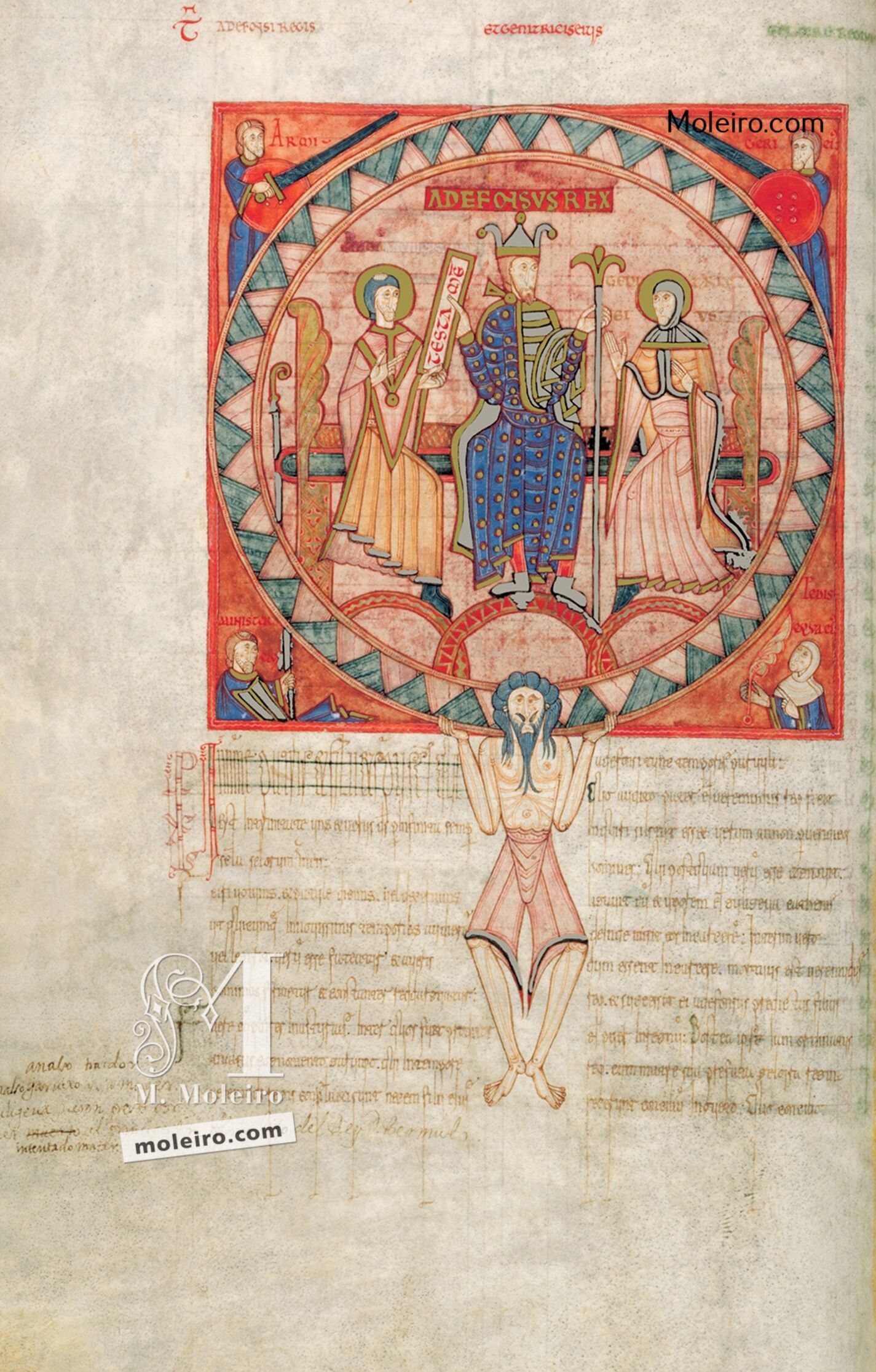If, in the previous case, we were discussing the extravagance of the composition, now we could say the same about the iconography. We have already mentioned the desire to surprise with different images; this leads the artist to diversify his methods, and thus avoid the monotony of other manuscripts. Here, a cosmic image of power has recurred, corresponding somewhat to the god Jupiter in Ancient Rome, God in the early middle ages, or his human representative, the Emperor. The figure supports a circle which would normally represent the universe itself, like Atlas holding up the skies. Within, we see the King and – unusually – the Queen and Bishop subordinate to him. There is an echo of the images of the Roman consuls found in the marble diptychs, when they begin the games with which their mandate is inaugurated. Therefore, he had to resort to two different styles so as to create his own.
Alphonse V was an important King. However, in some ways, he developed a policy so wide-reaching, far beyond its possibilities, because he inherited a weak and impoverished kingdom; this was thanks to continuous attacks by al- Mansur and his son Abd al-Malik´s troops.
The chosen composition is thus very distant from the government´s actions. For once, the excess of symbolism hasn´t filled the folio, as in previous examples. There were more royal images; three are missing, of which we must highlight those of Ferdinand I and – most significantly – Alphonse VI, the king admired above all other by Pelayo. He said of the Alphonse VI that he was a ´King driven by compassion´ and the ´father and defender of all Hispanic churches´. The images were cut out long ago and seem to have been lost forever.
Despite these losses, the cartulary remains the most exceptional in Europe. None before existed to serve as a model. On the contrary, Pelayo´s work is the basis for those later created for the Compostela and Leon cathedrals.
